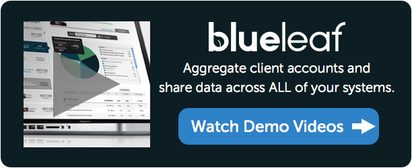Last Updated on July 20, 2020 by John Prendergast
 It’s time to calm your nerves.
It’s time to calm your nerves.
Rolling out account aggregation can be very straight forward.
The amount of work needed per client depends on the complexity of the system and that, in turn, governs how quickly you can roll out without an overwhelming amount of support requests. (Step #1 helps you avoid this.)
Ultimately a good roll out process is about communicating clearly with clients; what you’re planning, why you’re doing it and why it benefits them.
Communicating clearly is tricky, though, so make sure you prep well and execute with purpose.
PREP:
1.) Choose the right system.
This rest of this guide assumes you’ve chosen the best system – both for you and your client. If not, you may add complexity to your service, clients will sense that, and you’ll fight an uphill battle at each stage of the roll-out. To avoid this nightmare here’s a checklist with 15 Things to Look For + 9 Red Flags when shopping for account aggregation.
2.) Get out of your own way.
This is crucial.
You were mindful about choosing the best aggregation platform. Now, in the roll out process, DO NOT anticipate concerns. In an effort to be thorough or save time, advisors frequently raise issues they think clients “should” or “probably” care about. Stop now. By doing this you are creating issues not solving them. If your clients have concerns, they will ask. Have answers ready, but don’t force the concerns of the few on the many. It merely complicates otherwise simple issues. Next…
3.) Eliminate friction and unnecessary client effort.
If you’re thinking of a process with 3 steps, make it 2. If you’ve written 3 paragraphs in an email, get it down to 3-4 sentences. If you chose Blueleaf as your account aggregation platform, friction in during setup has already been reduced for you. Second, and maybe counterintuitively, DO NOT do all the setup work for your clients. For client facing technology, client involvement in setup is critical for their future engagement.
EXECUTE:
4.) Pick “the right” clients to start with.
The simplest way to start is by picking a few clients to talk with. These clients should be representative of your base and be people you think will be able to give good feedback. What is ‘good feedback’? Good feedback is clear, specific and focused on answering the question “Did we solve the problem we set out to solve?” and “Have my changes made clients happier?” That’s it.
Note: If a client is unwilling to take an hour to do something, they may be too busy. If a client is unwilling to take 5 minutes, then that should be a signal about the value that this client sees in what you’re doing. Double down on your communication, clarify and try again.
5.) Explain aggregation like a human.
Good aggregation platforms can do many things. Roll out isn’t the time to share a laundry list of all the features of the solution. Keep it simple. Here are 19 ways to describe aggregation in friendly terms. Make a list of 2 or 3 bullets (Not paragraphs) and tell clients “The system does A, B and C and lots more. It’s fantastic and we’re excited about how it will help you.” That’s it. Less is much much more.
6.) Show them what it looks like.
Ask your account aggregation provider for demo videos made specifically for clients. This allows clients to see the system before diving in, and get excited about it’s value. Here’s the friendly client video tour we provide to Blueleaf users.
7.) Invite them to the platform and to sync their own accounts.
This is where the power of account aggregation is kicked into high gear. Invite your clients, and empower them add their held-away accounts via their own portal. (On Blueleaf, this can be done with prospects too – no custodied accounts required!)
Now they’re in.
8.) Lastly, don’t expect 100% adoption of any system, no matter how good.
Great systems see adoption around 50%. While better can happen (and I’m proud to say Blueleaf sees it often), focus on an achievable target. If you get 55% of your clients to adopt, you’ve done well and improved the lives of over 1/2 your client base.
Questions?
Post them in the comments for direct help.
Related: Everything you need to know about Account Aggregation
